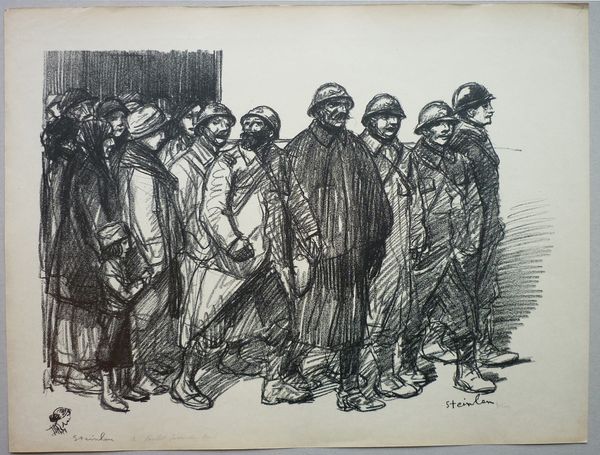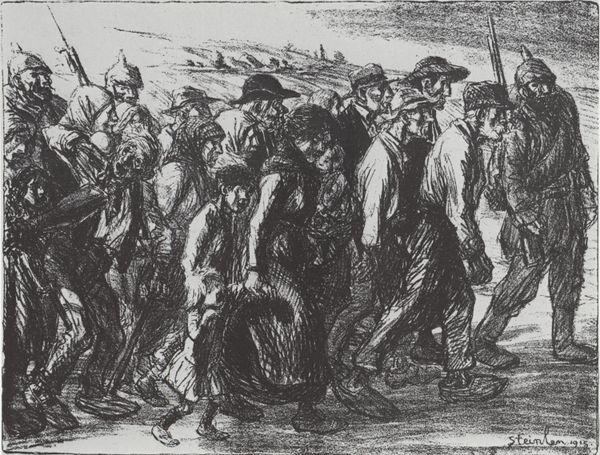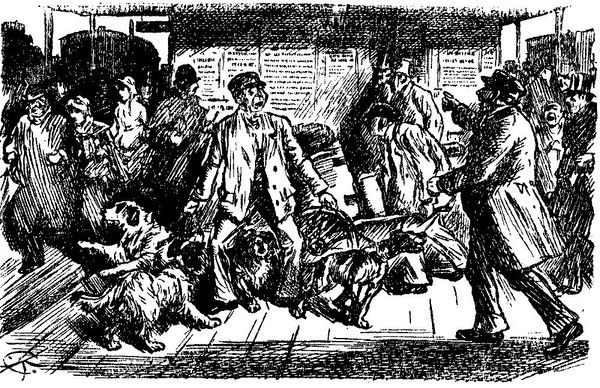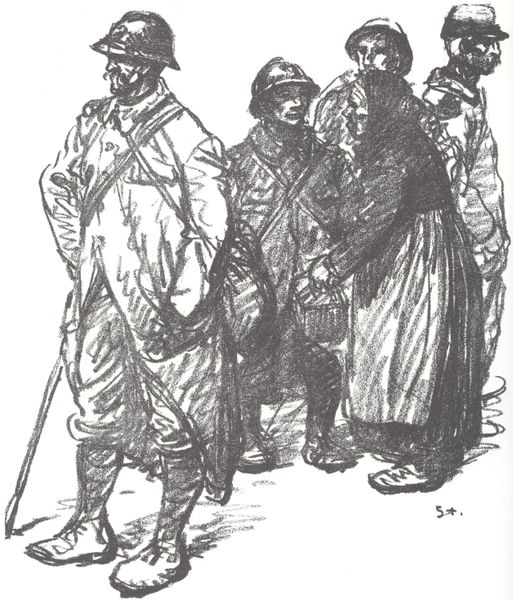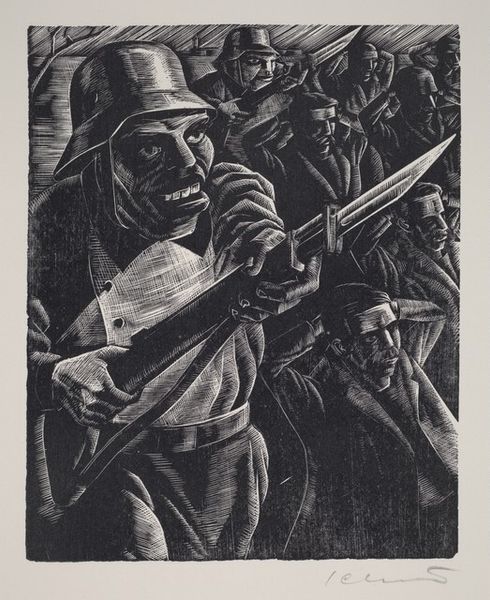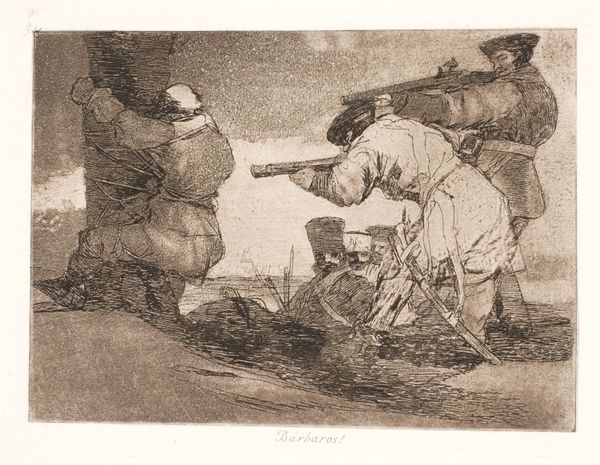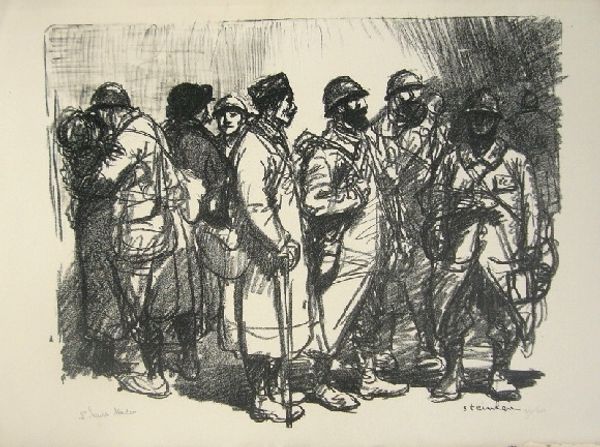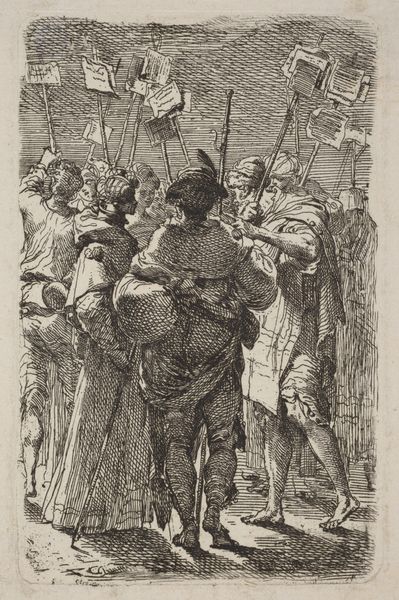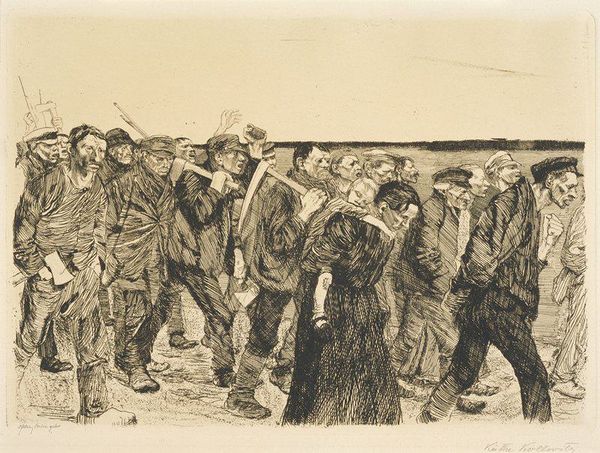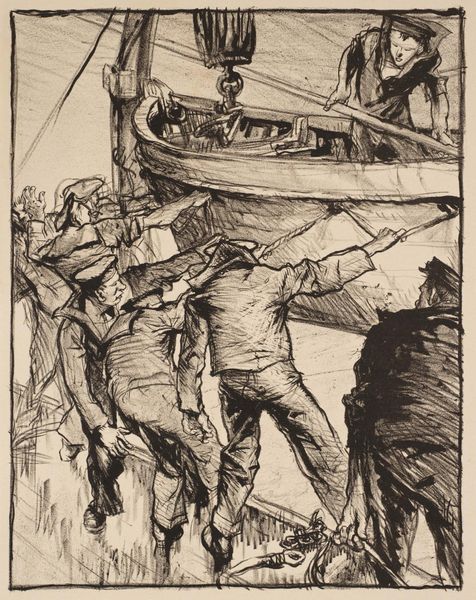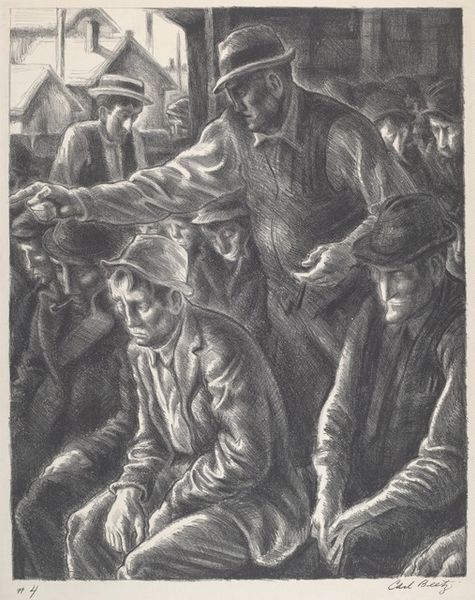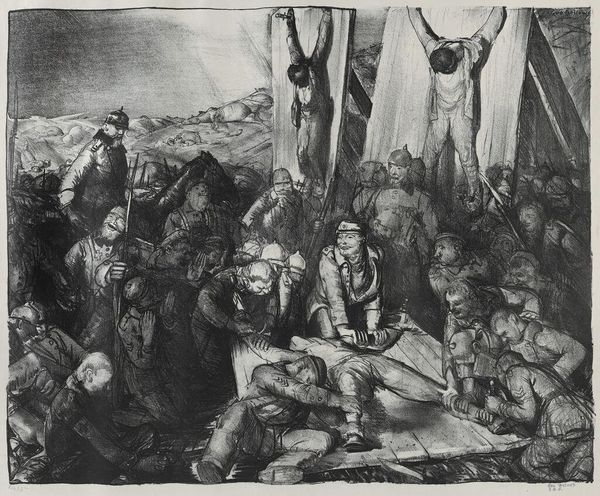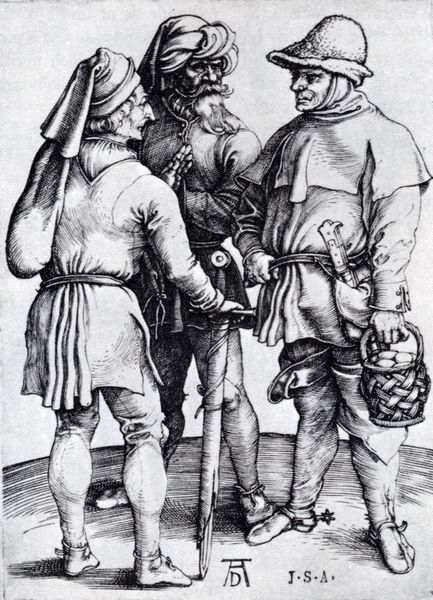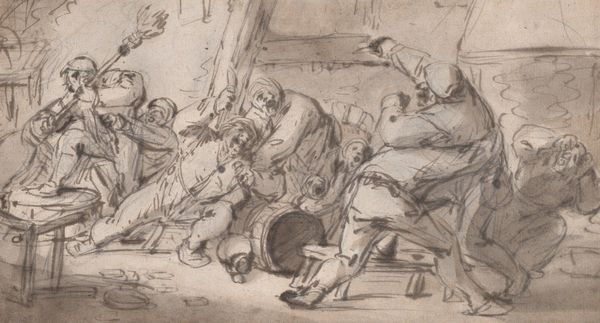
drawing, graphic-art, lithograph, print, ink
#
drawing
#
graphic-art
#
ink drawing
#
narrative-art
#
lithograph
# print
#
figuration
#
social-realism
#
ink
#
symbolism
#
history-painting
Copyright: Public domain
Curator: The ink and lithographic drawing, "Arguments Frappants," created by Théophile Alexandre Steinlen in 1898, plunges us into what appears to be a brutal street brawl. What strikes you first? Editor: The sheer dynamism, the frenzy. The composition itself feels like a melee—a chaotic mass of figures rendered with stark contrast. The high-key areas of the paper clash with dense inkwork to produce an almost sickeningly visceral feeling of tension. Curator: Absolutely. And this isn't just about visual tension; Steinlen was deeply involved in social and political movements of his time. Works like this reflect the often violent realities of urban life, the struggles of the working class in late 19th-century Paris. It served as potent commentary. Editor: The artist’s use of line is also important to consider, particularly when combined with stark value contrasts to help articulate the subjects’ emotional and physical engagement. It's raw. Look at how the figures are compacted into the picture plane, fighting in the foreground, being relegated into a hostile and chaotic mass behind. It looks less like representation and more like immediate sensation. Curator: And it does, which accounts for some of its propaganda value. Steinlen used his skills as a graphic artist to highlight social injustice and critique the powerful, which gained him audiences from all classes. His work wasn’t created for museum spaces as much as it was intended for the press. Editor: The way he uses that frenetic style really accentuates that feeling. It’s definitely convincing—it certainly moved me. Curator: Well, yes, Steinlen would make quite a few of these kinds of prints, commenting on labor movements and issues stemming from poverty. In some cases, his prints were even censored by the press because they were deemed too inflammatory. Editor: Which makes the historical context all the more resonant. You're right; these works weren’t necessarily produced to make us ask "What is Art?". Curator: Exactly. More “What is Happening?”. And, really, his works still invite these important conversations today. Editor: The visual vocabulary in "Arguments Frappants" effectively serves its larger political aims.
Comments
No comments
Be the first to comment and join the conversation on the ultimate creative platform.
